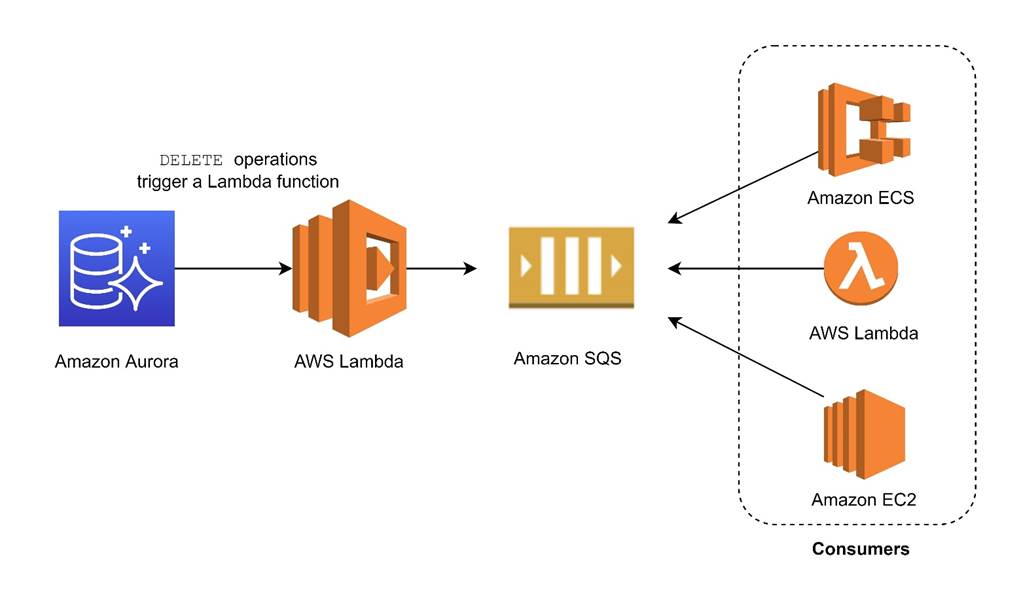Which of the following options can satisfy the given requirement?
A car dealership website hosted in Amazon EC2 stores car listings in an Amazon Aurora database managed by Amazon RDS. Once a vehicle has been sold, its data must be removed from the current listings and forwarded to a distributed processing system.
Which of the following options can satisfy the given requirement?
A . Create an RDS event subscription and send the notifications to Amazon SQ
B . Configure the SQS queues to fan out the event notifications to multiple Amazon SNS topics. Process the data using Lambda functions.
C . Create an RDS event subscription and send the notifications to AWS Lambda. Configure the Lambda function to fan out the event notifications to multiple Amazon SQS queues to update the processing system.
D . Create a native function or a stored procedure that invokes a Lambda function. Configure the Lambda function to send event notifications to an Amazon SQS queue for the processing system to consume.
E . Create an RDS event subscription and send the notifications to Amazon SN
F . Configure the SNS topic to fan out the event notifications to multiple Amazon SQS queues. Process the data using Lambda
functions.
Answer: C
Explanation:
You can invoke an AWS Lambda function from an Amazon Aurora MySQL-Compatible Edition DB cluster with a native function or a stored procedure. This approach can be useful when you want to integrate your database running on Aurora MySQL with other AWS services. For example, you might want to capture data changes whenever a row in a table is modified in your database.

In the scenario, you can trigger a Lambda function whenever a listing is deleted from the database. You can then write the logic of the function to send the listing data to an SQS queue and have different processes consume it.
Hence, the correct answer is: Create a native function or a stored procedure that invokes a Lambda function. Configure the Lambda function to send event notifications to an Amazon SQS queue for the processing system to consume.
RDS events only provide operational events such as DB instance events, DB parameter group events, DB security group events, and DB snapshot events .
What we need in the scenario is to capture data-modifying events (INSERT, DELETE, UPDATE) which can be achieved thru native functions or stored procedures. Hence, the following options are incorrect:
– Create an RDS event subscription and send the notifications to Amazon SQS. Configure the SQS queues to fan out the event notifications to multiple Amazon SNS topics. Process the data using Lambda functions.
– Create an RDS event subscription and send the notifications to AWS Lambda. Configure the Lambda function to fan out the event notifications to multiple Amazon SQS queues to update the processing system.
– Create an RDS event subscription and send the notifications to Amazon SNS. Configure the SNS topic to fan out the event notifications to multiple Amazon SQS queues. Process the data using Lambda functions.
References:
https://docs.aws.amazon.com/AmazonRDS/latest/AuroraUserGuide/AuroraMySQL.Integrating.Lambda.h tml https://aws.amazon.com/blogs/database/capturing-data-changes-in-amazon-aurora-using-aws-lambda/ Amazon Aurora Overview:
https://youtu.be/iwS1h7rLNBQ
Check out this Amazon Aurora Cheat Sheet: https://tutorialsdojo.com/amazon-aurora/
Latest SAA-C03 Dumps Valid Version with 400 Q&As
Latest And Valid Q&A | Instant Download | Once Fail, Full Refund

